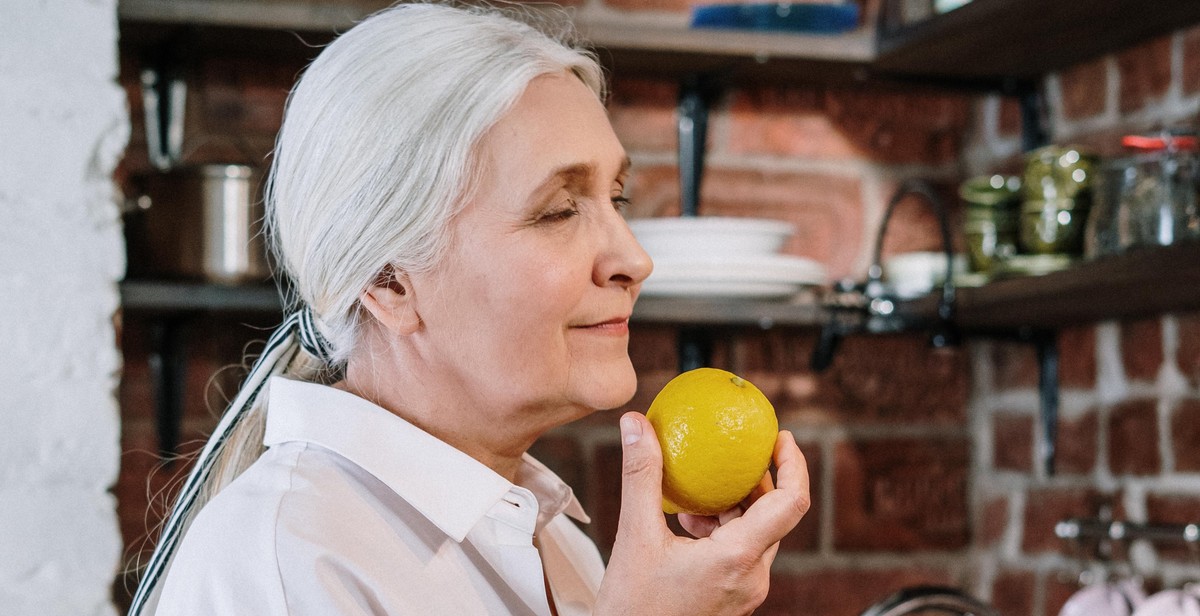Decoding Relationship Patterns: Why You Attract Certain Partners
Relationships are an integral part of our lives. They provide us with love, companionship, and emotional support. However, have you ever wondered why you attract certain partners? The answer lies in your relationship patterns.
Defining Relationship Patterns
Relationship patterns are the recurring behaviors, attitudes, and feelings that we exhibit in our relationships. These patterns are often developed during childhood and can be influenced by our upbringing, experiences, and past relationships. They can be positive or negative and can impact the quality of our relationships.
For example, if you grew up in a household with parents who constantly fought and had a tumultuous relationship, you may develop a pattern of attracting partners who exhibit similar behaviors. On the other hand, if you had parents who displayed a healthy and loving relationship, you may have a pattern of seeking out partners who exhibit similar qualities.
Importance of Understanding Your Relationship Patterns
Understanding your relationship patterns is crucial in building healthy and fulfilling relationships. By identifying your patterns, you can work towards breaking negative ones and reinforcing positive ones. This can lead to more satisfying relationships and a better understanding of yourself.
In this article, we will delve deeper into the topic of relationship patterns and explore why we attract certain partners. By the end, you will have a better understanding of your own patterns and how to create healthier relationships.

Family of Origin: How Your Family Shapes Your Relationship Patterns
When it comes to relationships, our family of origin plays a significant role in shaping our patterns and behaviors. Our family dynamics, communication styles, and values are all learned from our parents and siblings. These patterns can either positively or negatively impact our future relationships.
Identifying Negative Patterns Learned from Your Family
It’s essential to identify negative patterns learned from your family to break the cycle and create healthy relationships. The following are some common negative patterns:
- Codependency: when one partner relies too heavily on the other for emotional support and their sense of self-worth.
- Conflict avoidance: when disagreements are ignored or swept under the rug, leading to unresolved issues and resentment.
- Enmeshment: when boundaries are blurred, and family members are overly involved in each other’s lives, leading to a lack of independence and autonomy.
- Emotional neglect: when emotions are dismissed, ignored, or invalidated, leading to a lack of emotional intimacy and connection.
Recognizing these patterns and how they affect your relationships is the first step in breaking the cycle. Seeking therapy or counseling can also be helpful in addressing these patterns and learning healthier relationship skills.
| Positive Patterns | Negative Patterns |
|---|---|
| Effective communication | Communication avoidance |
| Respect for boundaries | Enmeshment |
| Emotional support | Emotional neglect |
| Healthy conflict resolution | Conflict avoidance |
By understanding how your family of origin has shaped your relationship patterns, you have the power to break negative cycles and create healthy and fulfilling relationships.
Attachment Style
Attachment style refers to the way we connect and form relationships with others. It is developed in early childhood and is influenced by our interactions with primary caregivers. There are four main attachment styles: secure, anxious-preoccupied, dismissive-avoidant, and fearful-avoidant.
Understanding Different Attachment Styles
Secure attachment style is characterized by a sense of comfort with emotional intimacy and a belief that others can be trusted and relied upon. Anxious-preoccupied attachment style is characterized by a fear of abandonment and a need for constant reassurance and closeness. Dismissive-avoidant attachment style is characterized by a tendency to avoid emotional intimacy and a belief that others are not dependable. Fearful-avoidant attachment style is characterized by a combination of the anxious and dismissive styles, with a fear of abandonment and a tendency to avoid emotional intimacy.
It is important to note that attachment styles are not set in stone and can change over time. Additionally, individuals can have different attachment styles with different partners.
How Attachment Style Affects Your Relationship Patterns
Attachment style can have a significant impact on the types of partners we attract and the patterns we develop in relationships. Individuals with a secure attachment style tend to attract and maintain healthy, fulfilling relationships. Those with anxious-preoccupied attachment style may attract partners who are emotionally unavailable or who reinforce their fear of abandonment. Dismissive-avoidant individuals may attract partners who are also emotionally avoidant or who reinforce their belief that others cannot be trusted. Fearful-avoidant individuals may struggle with forming close relationships and may attract partners who are emotionally unavailable or abusive.
Recognizing your attachment style and how it affects your relationship patterns can be a helpful step in improving your relationships and finding more fulfilling connections.
The Role of Self-Esteem and Self-Worth in Relationships
Self-esteem and self-worth are crucial elements in any relationship. They are the foundation upon which healthy relationships are built. Self-esteem refers to the overall opinion we have of ourselves, whereas self-worth is the value we place on ourselves as individuals. When we have high self-esteem and self-worth, we tend to have positive relationship patterns. We attract partners who treat us with respect and kindness, and who value us for who we are.
Why Low Self-Esteem Can Lead to Negative Relationship Patterns
On the other hand, when we have low self-esteem and self-worth, we may attract partners who are emotionally unavailable, abusive, or who do not treat us with the respect we deserve. We may tolerate negative behaviors because we do not believe we deserve any better. This can lead to a negative cycle of attracting and staying in unhealthy relationships.
Low self-esteem can also lead to codependency in relationships. Codependency is when we rely on our partner for our self-worth and validation. We may become overly invested in our partner’s well-being and neglect our own needs and desires. This can create an unbalanced dynamic in the relationship.
It is important to work on improving our self-esteem and self-worth to break negative relationship patterns. This can be done through therapy, self-reflection, and practicing self-care. When we value ourselves and believe we deserve healthy relationships, we are more likely to attract and maintain fulfilling partnerships.
| 1. | Practice self-compassion and self-forgiveness |
| 2. | Challenge negative self-talk and replace it with positive affirmations |
| 3. | Set boundaries and communicate your needs in relationships |
| 4. | Engage in activities that bring you joy and fulfillment |
| 5. | Surround yourself with positive and supportive people |

Unresolved Trauma and Relationship Patterns
Unresolved trauma can have a significant impact on your relationship patterns. Trauma can be defined as any experience that overwhelms your ability to cope, leaving you feeling helpless and powerless. When trauma is not processed and resolved, it can manifest in various ways, including through your relationships with others.
How Unresolved Trauma Affects Your Relationship Patterns
Unresolved trauma can affect your relationship patterns in several ways:
- Repetition: You may find yourself repeating the same patterns in your relationships, such as choosing partners who are emotionally unavailable or abusive.
- Intimacy: You may struggle with intimacy and have difficulty trusting others, leading to a fear of getting close to anyone.
- Communication: You may have difficulty communicating your needs and feelings, leading to misunderstandings and conflicts in your relationships.
These patterns can be harmful to your relationships and can prevent you from forming healthy and fulfilling connections with others.
Seeking Help to Heal from Trauma
If you have unresolved trauma that is affecting your relationship patterns, it’s important to seek help from a mental health professional. Therapy can help you process and resolve your trauma, allowing you to form healthier relationships with others.
A therapist can help you develop coping skills, improve your communication, and build self-esteem. They can also help you identify patterns in your relationships and work towards breaking those patterns.
Healing from trauma takes time and effort, but it is possible. With the help of a therapist and a commitment to self-care, you can break free from unhealthy relationship patterns and form fulfilling connections with others.
Breaking the Cycle
Breaking the cycle of unhealthy relationship patterns can be a challenging process, but it’s essential for building healthy and fulfilling relationships. The first step is taking responsibility for your relationship patterns and acknowledging that you have a role in attracting certain partners.
Taking Responsibility for Your Relationship Patterns
It’s easy to blame external factors for our relationship issues, such as bad luck or the flaws of our partners. However, it’s important to recognize that we have control over our own behavior and the patterns we attract. By taking responsibility for our relationship patterns, we can begin to identify the underlying causes and work towards making positive changes.
Making Conscious Choices in Your Relationships
When we’re stuck in negative relationship patterns, it can feel like we’re powerless to break free. However, by making conscious choices in our relationships, we can start to shift our patterns towards healthier dynamics. This can include setting boundaries, communicating our needs and expectations, and choosing partners who align with our values and goals.
Remember, breaking the cycle is a process that takes time and effort. It’s important to be patient with yourself and seek support from loved ones or a professional if needed. By taking responsibility for your relationship patterns and making conscious choices, you can build fulfilling and healthy relationships.

Conclusion
Decoding relationship patterns can be a challenging process, but it is an important step towards building healthier and more fulfilling relationships. By understanding why you attract certain partners, you can identify any negative patterns or behaviors that may be holding you back and work towards making positive changes.
It’s important to remember that attraction is not always a conscious decision, and there may be underlying psychological factors that influence your choices. However, by taking the time to reflect on your past relationships and the patterns that emerge, you can begin to gain insight into your own needs and preferences.
Remember that relationships thrive on communication, trust, and mutual respect. By prioritizing these key elements, you can build strong and lasting connections with your partner.
Takeaways
- Identify patterns in your past relationships to gain insight into your preferences and needs.
- Reflect on any negative patterns or behaviors that may be holding you back.
- Communicate openly and honestly with your partner to build trust and mutual respect.
- Remember that attraction is not always a conscious decision, but by understanding the psychological factors at play, you can make positive changes towards building healthier relationships.
Overall, decoding relationship patterns is a valuable tool for anyone looking to improve their love life. By understanding your own needs and preferences, you can make informed decisions about the types of partners you attract and build fulfilling relationships based on trust, communication, and mutual respect.
